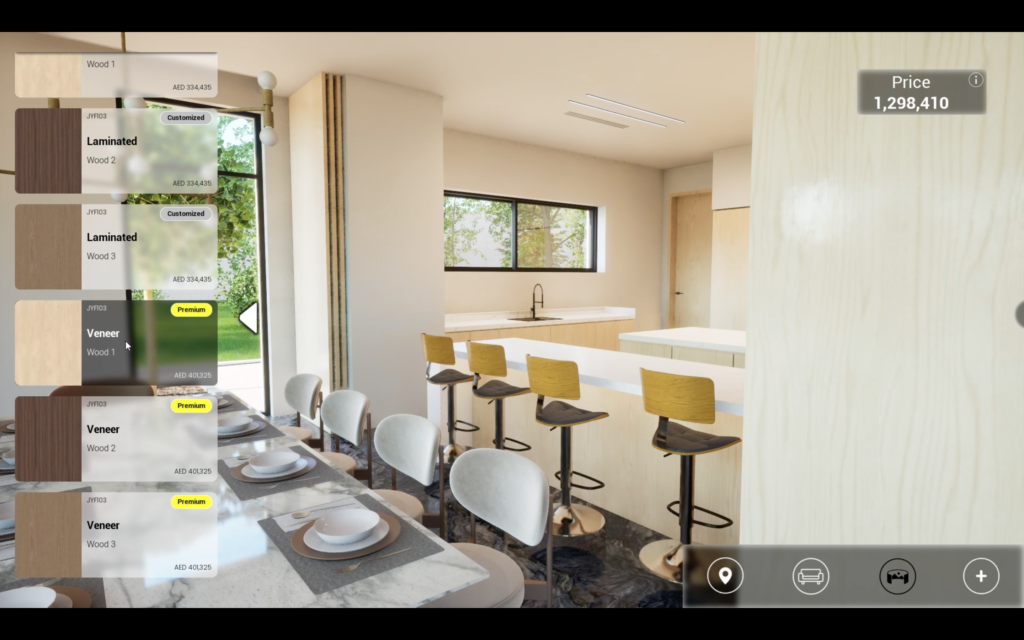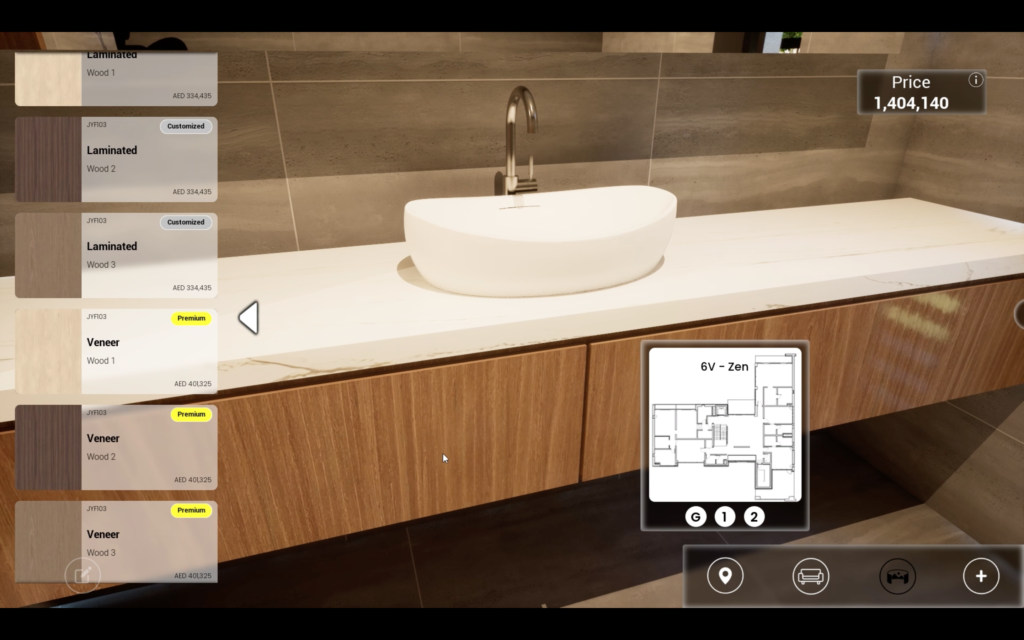Customer ideas are very important, especially in interior design and projects. Involving the customer in the process with interactive work and allowing them to connect with the project increases positive feedback to a great extent.
Architectural visualization has evolved significantly over the past few years, largely thanks to advancements in technology. One of the most revolutionary tools in this space is Unreal Engine 5, a game engine developed by Epic Games that is transforming the way architects, designers, and real estate professionals present their projects. In this blog, we will explore how interactive architectural projects work with Unreal Engine 5, the benefits of using this technology, and how it can enhance the customer experience.
Understanding Unreal Engine 5
Unreal Engine 5 (UE5) is a powerful, real-time 3D creation tool primarily known for its use in the gaming industry. However, its high fidelity, real-time rendering capabilities, and interactive features have made it a valuable asset for architectural visualization. Unlike traditional rendering software, UE5 allows for real-time modifications, enabling designers to tweak lighting, textures, and materials on the fly. This adaptability is essential for creating interactive architectural presentations that are both visually stunning and highly informative.






How Does It Work?
1. Real-Time Rendering with Nanite and Lumen:
UE5’s real-time rendering is powered by two groundbreaking technologies: Nanite and Lumen.
- Nanite is a virtualized geometry system that allows for incredibly detailed models without significant performance hits. This means that architectural models can include intricate details such as fine textures on building materials, detailed vegetation, and even complex interiors without compromising on rendering speed. This is crucial for creating realistic and immersive environments that can engage potential buyers or stakeholders.
- Lumen is UE5’s fully dynamic global illumination system. It enables real-time lighting changes, allowing designers to show how light interacts with different materials and surfaces throughout the day. For instance, an architect can demonstrate how natural light will fill a room in the morning versus the afternoon, providing a more dynamic and realistic presentation of the space.
2. Interactivity and Immersion:
Unreal Engine 5 excels in creating interactive experiences. Unlike static 3D renders or videos, interactive architectural presentations built in UE5 allow users to explore spaces freely. This interactivity is achieved through various features:
- Virtual Tours and Walkthroughs: Users can navigate through a virtual space using VR headsets or traditional desktop setups. This immersive experience provides a realistic sense of scale and proportion, allowing clients to experience a building or interior space as if they were physically there.
- Interactive Elements: Designers can embed interactive elements such as clickable hotspots that provide additional information or alternative design options. For example, clicking on a specific wall could change its texture from brick to plaster, allowing clients to visualize different material choices in real-time.
3. Enhanced Customization and Realism:
Using UE5, architects and designers can offer a higher level of customization to clients. The engine’s powerful tools allow for real-time changes in various elements, including:
- Materials and Textures: Instantly swap materials on walls, floors, and furniture, allowing clients to see different design options and make faster, more confident decisions.
- Lighting and Environment: Adjust the lighting to show different moods or times of day, giving clients a better sense of how the space will feel.
- Animations: Include animated elements like moving cars, people, or even dynamic weather conditions to create a more lively and realistic environment.
The Benefits of Using Unreal Engine 5 for Interactive Architectural Projects
- Improved Client Engagement and Decision-Making: By providing an immersive and interactive experience, UE5 helps clients better understand and visualize architectural designs. This enhanced understanding leads to more informed decision-making and can accelerate the approval process.
- Increased Efficiency in Design Iterations: The ability to make real-time changes reduces the need for multiple rendering iterations, saving both time and resources. This efficiency is particularly beneficial in collaborative settings, where stakeholders can provide immediate feedback during a virtual walkthrough.
- Enhanced Marketing and Sales: Interactive presentations created with UE5 can be a powerful marketing tool. They offer a unique way to differentiate a project in a competitive real estate market, enhancing sales pitches and marketing campaigns.
- Versatility Across Platforms: Content created in Unreal Engine 5 can be easily adapted for various platforms, including VR headsets, desktops, tablets, and even smartphones. This versatility allows for a broader reach and accessibility, making it easier to showcase projects to a global audience.
Conclusion
Interactive architectural projects using Unreal Engine 5 are revolutionizing the way designs are presented and experienced. By leveraging the power of real-time rendering, interactivity, and high-quality visuals, architects and designers can create compelling, immersive experiences that engage clients and stakeholders like never before. As the industry continues to evolve, tools like UE5 will play an increasingly important role in shaping the future of architectural visualization.
Ready to take your architectural presentations to the next level? Contact Bilgili Stüdyo today to learn more about our cutting-edge visualization services using Unreal Engine 5.
By focusing on the technical aspects of Unreal Engine 5, such as Nanite and Lumen, and emphasizing the benefits of interactive presentations, this blog post aims to educate potential clients while also serving as a marketing tool to highlight the capabilities of Bilgili Stüdyo.


No responses yet